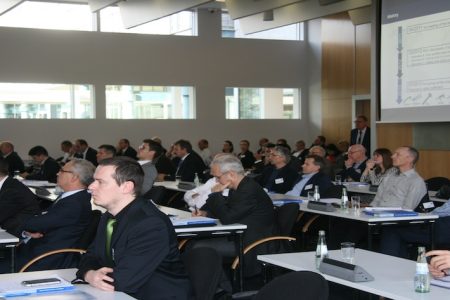Nearly 140 members discuss security aspects of secure storage units with new tool list of the new standard EN 1143-1, the future of cash and some potential dangers of older safes in focus.
When the European Security Systems Association (ESSA) invites its members to its general assembly, then there is no way too far: Nearly 140 experts from the entire physical security industry travelled from New Zealand, China, India, Brazil, the US and many European countries to Frankfurt. These included leading manufacturers and suppliers of safes and solutions for strongrooms as well as insurance and government representatives.
Programme highlights included a lecture on the future of cash, a workshop on the European standard EN 1143-1:2019 for safes, ATM safes, strongroom doors and walls, which has been in force since April 2019, and a lecture on possible pollutants in safes built years ago.
Cash remains an important means of payment
As leading engineer of KBA-NotaSys, a top manufacturer of printing presses and security solutions for banknotes and securities, Johannes Schaede has been keeping a close eye on the market for decades. The expert is not afraid of an end to banknote printing, despite the trend towards cashless, often smartphone payments. “Indeed the production of banknotes is increasing in nine of the ten largest markets. In 2023 it will be five to seven percent higher than ten years earlier,” he reported.
The expert had several positive messages for the present manufacturers of ATM safes or safes for private and commercial users. The trend towards negative interest rates as well as the growing need for privacy in the digital world tends to result in more cash use, especially since every card payment leaves data traces. In addition, for millions of people worldwide who do not have an account, cash is the central access to economic life.
Preparing safes for the technical progress of burglary tools
The workshop on EN 1143-1:2019 showed that since its publication in April 2019, the industry has only cautiously approached the new regulation. This applies in particular to the optional T2-toolset contained in the new regulation. Tools, which safes as well as doors and walls of strongrooms are to withstand as long as possible in destructive tests, were adapted to the current state of the art for this list.
Dirk Etheber, certification engineer of the European Certification Body GmbH, dared to make first assessments of the influence of these more powerful tools on future tests and their results. Electric cutting tools, hammer drills, concrete chain saws and thermal lances, some of which have significantly more penetrating power than the previously binding T1 tool set, will present engineers with challenges. However, because the use of the T2 tool set is optional even from the point of view of insurers, manufacturers are hesitant. “It is not clear when the first safes and strongroom solutions will be launched on the market for which the T2 tool set will be used for certification,” he explained.
For more security news visit here.













